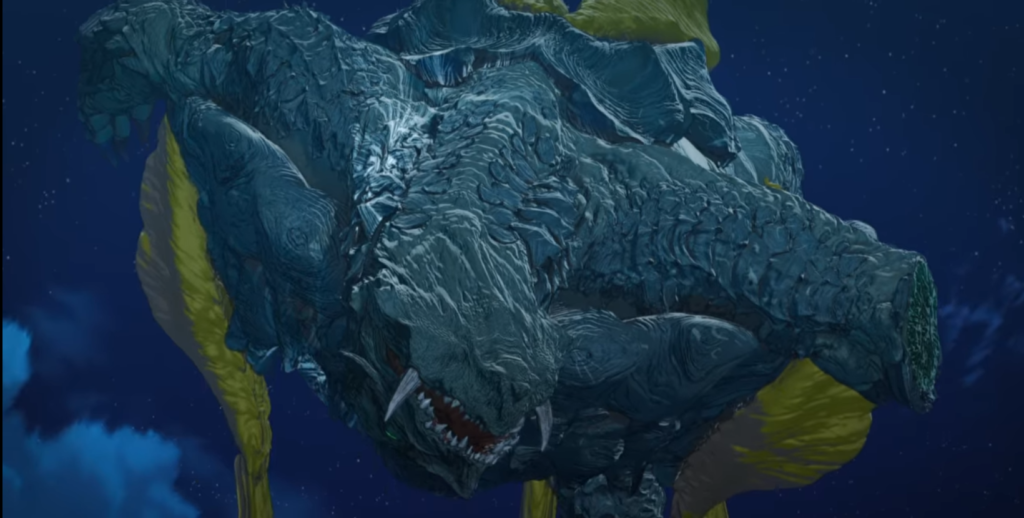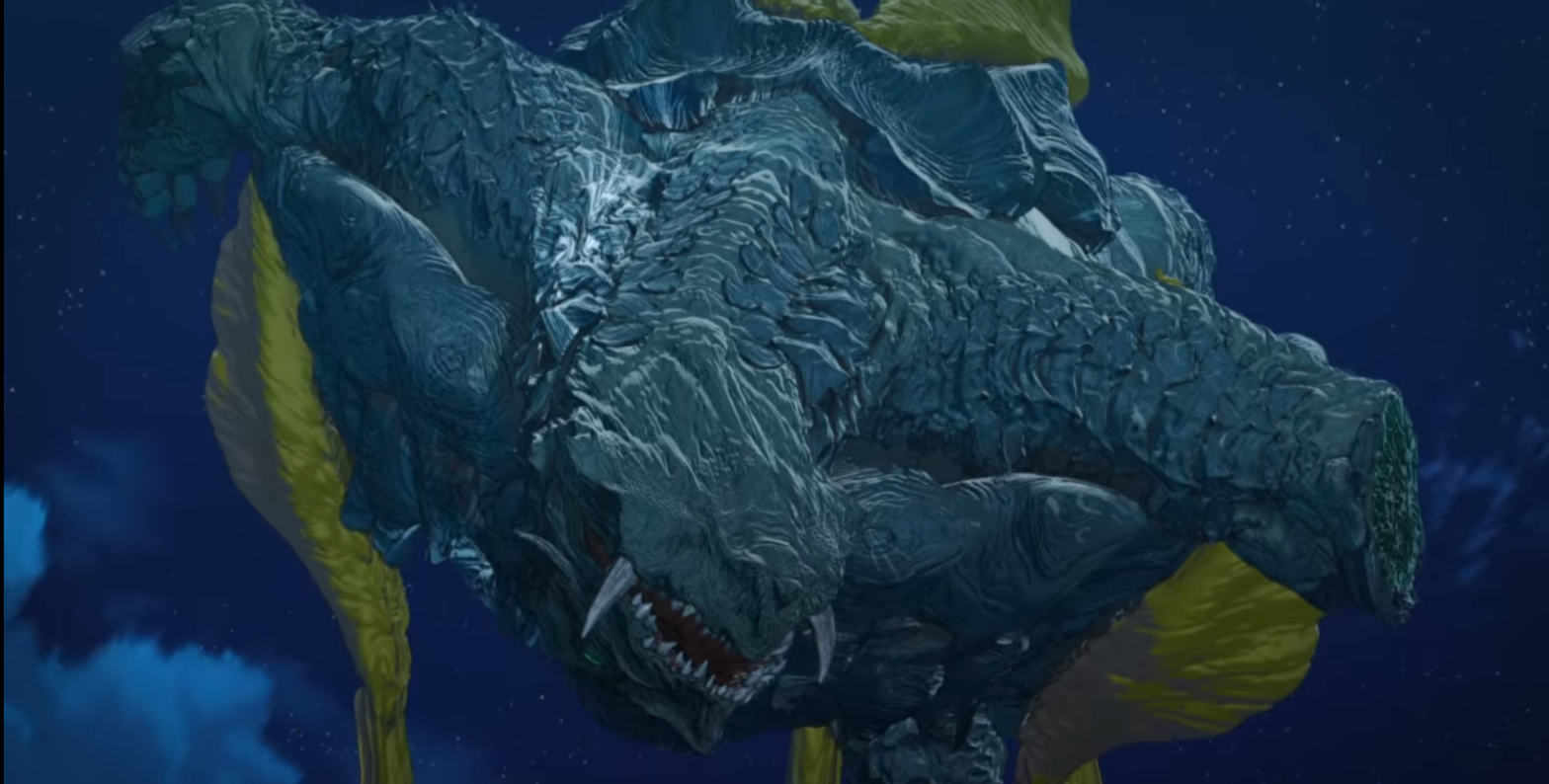Anime Review: Gamera: Rebirth
It is summer, 1989, on an alternate Earth where the Apollo Program never ended and there’s a permanent station on the Moon. In Tokyo, Japan, three children are enjoying their last summer break together before middle school separates them. Sensitive Boco, protective Joe and cryptid fan Junichi may not share all their interests, but they’ve been good friends. They’ve saved up some money for radio equipment to try to stay in touch even after the break, but it is stolen by bullies led by military brat Brody.

When the trio catches up, their confrontation with the bullies is interrupted by a sward of anthropophagic monsters called Gyaos. Brody’s friends desert him, and it’s up to Boco and company to save the other kid. Fortunately, things are made easier when the giant turtle kaiju Gamera shows up and defeats Gyaos!
The four children are taken into custody by the U.S. military and the non-profit Eustace Foundation. Gamera and Gyaos aren’t the only monsters around, and young scientist Emiko Melchiorri believes the kids have been “marked” and will attract the remaining kaiju. Thus the Foundation must protect them. Her partner, negotiator James Tazaki, is less keen on the notion as he doesn’t like children, but has to play along. Can they and Gamera keep the children safe until the true crisis is revealed?
Gamera was first created for the movie Daikaiju Gamera (1965) to cash in on the popularity of Toho’s big star, Gojira/Godzilla. He was thought up by taking “Kame” for “turtle” and monsterizing it. In that first movie, Gamera was a menace, but there was a child character that somehow had a bond with him. The second movie was also serious, and skipped the child, but every movie after that in the Showa era had “Kennies” in prominent roles as the plots became sillier. Many casual fans may be most familiar with the MST3K spoofs.
In the Heisei Era, the Gamera franchise was rebooted in a more serious trilogy that was well received by kaiju fans. There was a fourth film that rebooted the story again, a bit lighter and with a child star again.
Now, in the Reiwa Era, there’s a short anime series starring Gamera. At first it looks like a throwback to the Showa films, with the classic monster opponents from those movies, and the very heavy emphasis on the antics of cute/annoying kids in the first episode.
But it quickly becomes quite dark and serious. The kaiju (save Gamera) eat people, and prefer the taste of children. This is an important plot point. There are specific reasons for why Boco seems to have such a strong bond with the giant turtle.
The best of the kids is Brody, the former bully who’s trying to be a friend now but has to start from a position of bad behavior the others haven’t forgotten. He has relationship troubles with his father, and fails to pick up a couple of important social clues.
But the vast majority of fans are here for the kaiju fights, and the series delivers on this. The CG animation works well here. Not quite as well on the humans, though they aren’t as bad as say, the Netflix Ultraman. Awesome fights, at least one per episode.
There’s also some interesting twists on just what the kaiju exist for.
On the other hand, with only six episodes, the series feels rushed in places, and some characters don’t get enough development. I’m thinking especially the tank commanders who make cameos in the first five episodes, then are important in the finale, but I had zero emotional investment in their survival. The male tank commander does origami, is that relevant? Never picked up on.
Content note: kaiju violence, human violence, death of children. Bullying. Body function “humor.” A bit of fanservice from Emiko. Kids the age of the protagonists will probably need adult guidance.
Primarily recommended to Gamera fans who are okay with children taking up the majority of plot time.

